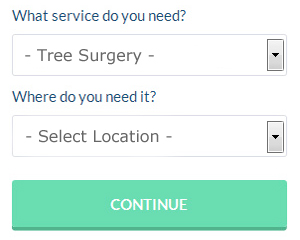Stanford-le-Hope Tree Surgeons (SS17): Whilst there are obviously many chores which you're able to do in the garden by yourself, you will find that there are certain projects that must not be attempted if you do not know exactly what you are up to and you have the right tools to carry them out in safety. One task that comes into such a category is the care of trees. Whilst you might feel it is very simple just to chop several branches off a tree, there's far more skill involved than you may imagine. If the task is not undertaken at the appropriate time and not carried out in the correct manner you might injure your trees, which may in time cost you much more than if you'd have employed a knowledgeable tree surgeon in the first place. If there are taller trees involved then you would be daft to even think about trying to deal with them by yourself, as, besides anything else, you could easily end up in hospital with broken bones or even something worse. For this reason, your priority ought to be to look for a reliable tree care specialist near you.
There may be many reasons why you feel the need to call a tree surgeon, therefore it will be helpful to run over them today. Stanford-le-Hope tree surgeons don't just tackle damaged trees which might fall onto a road or building, as you may have seen after stormy weather. They additionally sort out things such as thinning or reducing trees to let more light into the garden, getting rid of old tree stumps that are being a nuisance, developing tree management or maintenance plans to keep the trees in good shape and inspecting trees for disease or damage so that these issues are tackled early doors.

Before you choose a tree surgeon you ought to make sure that that they're members of the Arboricultural Association, which is the principal professional trade body for this occupation within the UK. They should also have the correct level of public liability insurance so that all accidents or mishaps are well covered, and ought to be willing to help you with applications for approval to do the intended tree work from the local authority for Stanford-le-Hope. A tree inspection needs to be performed before work begins to confirm that the trees aren't protected by a Preservation Order or located inside a Conservation Area.
Undoubtedly safety is the primary worry when conducting any sort of tree surgery in Stanford-le-Hope, and your chosen tree surgeon needs to be conversant with all of the necessary safety measures. He'll bring all the essential equipment to work safely on your trees and make sure that they aren't harmed in any way during the process, nor any damage is inflicted on yourself or your property while the work is done.
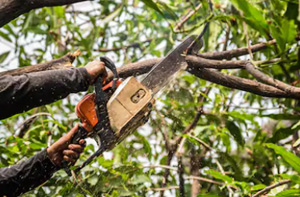
Using climbing and tree surgery equipment comes naturally to a licenced tree surgeon, and he will happily start work using pole saws, climbing ropes, rigging pulleys, winches, slackline kits, loppers, chain saws, wood chippers, rigging ropes, harnesses, lowering pulleys and stump grinding equipment. This equipment can be quite innovative and has been designed progressively to make the tree surgery process both safer and simpler.
Of course there are a lot of waste materials created during the process of tree surgery and this needs to be removed and ethically got rid of. This ought to be itemised in the quotation, so make sure that this is so. The disposal of tree waste is really a legal responsibility for tree surgeons, and so be suspicious of anybody who can't verify that this actually applies to them.
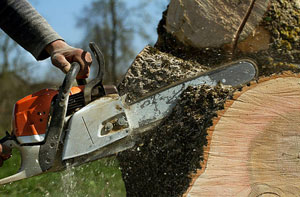
Stanford-le-Hope tree surgeons ply their trade all around the town, but you should not fret if you are living outside the town because the majority will happily travel to places such as Linford, South Benfleet, West Tilbury, Langdon Hills, Vange, Orsett, South Ockendon, Mucking, Basildon, North Stifford, Horndon on the Hill, Grays, Corringham, Canvey Island etc. Therefore, this info should be helpful to you whether you're trying to find an honest tree surgeon in Stanford-le-Hope, or in the surrounding county of Essex or adjoining counties.
Stanford-le-Hope tree surgeons are also tasked with protection and conservation of woodlands, in addition to the climbing, felling and trimming of trees. By the assessment and inspection of trees, they are able to highlight potential safety hazards. Ensuring that trees are healthy, disease-free and able to flourish and survive, is an integral part of their responsibilities.
Tree surgery is widely available in Stanford-le-Hope and also in: Linford, South Benfleet, West Tilbury, Langdon Hills, Vange, Orsett, South Ockendon, Mucking, Basildon, North Stifford, Horndon on the Hill, Grays, Corringham, Canvey Island, and in these postcodes SS17 0NW, SS17 0LB, SS17 0BE, SS17 0FN, SS17 0BD, SS17 0PB, SS17 0JX, SS17 0HR, SS17 0BP, SS17 0LJ. Local Stanford-le-Hope tree surgeons will probably have the postcode SS17 and the telephone code 01375. Verifying this can make sure that you access a local tree surgeon. Stanford-le-Hope property owners can benefit from these and many other similar services.
If you need this type of service it's unquestionably better to use a qualified tree surgeon. Stanford-le-Hope homeowners can benefit greatly from the skill sets offered by a seasoned professional.
Tree Surgery Apprenticeships - Training - Courses Stanford-le-Hope

Having a job as a tree surgeon is a rewarding and satisfying way to make a living. Options like starting at the bottom (perhaps as a groundworker) and working towards this goal, taking a university course, gaining a tree surgery apprenticeship, subscribing to a private course or applying for a college course are accessible to those with a passion to be a tree surgeon. For young people, tree surgery apprenticeships in Stanford-le-Hope (where on offer), can be applied for while they're still attending school. Individuals of all age groups can enroll in college and private courses in tree surgery and they're available throughout the United Kingdom. Various tree surgery related university courses are offered in countryside management, forestry, arboriculture, forest management and woodland ecology & conservation, and people with the correct qualifications (ordinarily 1 to 3 "A" levels) can shoot for higher national diplomas, degrees and foundation degrees. Last but not least, you could get a bit of tree care experience by volunteering for the Forestry Commission, the Tree Council, the Woodland Trust or the National Trust, all of who frequently have positions available. I really hope this article has proved useful if you found your way here searching for details on "how to become a tree surgeon in Stanford-le-Hope". You can see more information on how to become a tree surgeon by visiting the National Careers website.
Dutch Elm Disease
While Dutch Elm Disease (Ophiostoma novo-ulmi) is not quite the problem that it once was, during the last 50 years or so it has killed tens of millons of elm trees all over the United Kingdom. Accidentally imported into Britain, by way of elm logs imported from North America (Canada) in the Sixties, Dutch Elm Disease (DED) is caused by the fungus Ophiostoma novo-ulmi which is spread by the elm bark beetle.
Through the movement of elm products such as bark mulch, saplings, crates, and logs with the bark on, it swiftly spread through the United Kingdom after its initial arrival. This awful disease did not only affect elms in Great Britain, but also ravaged elm stocks in mainland Europe, North America and New Zealand. While the origins of Dutch Elm Disease are uncertain, the suspicions are that it first came from Asia (most likely Japan).
The first symptoms of DED are:
- Clusters of leaves that turn yellow, wilt and fall.
- Dark rings or spots in the cross-section of twigs.
- A "shepherd's crook" effect on affected twigs.
- Shoots that die back from the tip.
It generally starts to appear in early summer.
Due to disease and the chopping down of dead, infected and dying trees, there are not many large elms surviving in the UK's countryside, and thus the spread has slowed down and the elm bark beetle's habitat largely decimated. A project for the propagation of young elms that up to now have proven resistant to Dutch Elm Disease is now being undertaken.
If you've got elm trees on your property in Stanford-le-Hope, and are suspicious that they may be affected by Dutch Elm Disease, contact your neighbourhood tree surgeon for guidance, or put in a request for a diagnosis from the Tree Health Diagnostic and Advisory Service.
Trees affected - Ulmus and Zelkova.
Spread by - small beetles of the Scolytus and Hylorgopinus genera.
Cause - fungi Ophiostoma Ulmi and Ophiostoma Novo-Ulmi.
(Tags: Dutch Elm Disease Signs, Dutch Elm Disease Stanford-le-Hope, Spotting Dutch Elm Disease).Skills Needed to be Tree Surgeons in Stanford-le-Hope
- Have patience and the ability to stay calm and focused in times of stress.
- Be aware of the dangers and complexities involved in all areas of tree work.
- Be capable of repairing, using and maintaining machinery and tools.
- Physical skills such as movement and co-ordination.
- Have the ability to work alongside other people.
- Have a good understanding of public safety.
- Be able to work well with your hands.
- Be professional and capable of completing tasks within a specified time frame.
- Have essential computer skills and know how to complete tasks with handheld devices.
- Have a methodical and organised way of working.
- Excellent customer skills.
Tree Surveys Stanford-le-Hope
There are a number of instances where tree surveys might be required, property extension and land development being the most frequent. If, for example, you happen to be clearing some land in Stanford-le-Hope to make space for a new home or an extension to an existing property, and there are trees on that land, you might need to carry out a professional tree survey to British Standards BS5837 (2012). Tree surveys in Stanford-le-Hope must be handled by a qualified tree surgeon or arboricultural surveyor, and this applies whether the tree survey is being conducted on either a public or private property.
A wide range of information will be gleaned about all the trees within the area specified. For instance:
- The diameter of each tree (taken 1.5m above the ground).
- The branch spread to the South, East, North and West.
- The existence of any TPOs (Tree Preservation Orders).
- The life expectancy of the trees.
- The species of each tree (either scientific or common).
- Preliminary tree management recommendations.
- Allocating a unique tree reference number for each tree.
- The structural and physiological health of the trees.
- The height of each tree in metres.
- The number of trees.
- The age of the trees.
If you happen to be doing work on an existing home in Stanford-le-Hope, and are not modifying the access points or service lines, or extending the footprint of the building, you probably won't need to carry out a tree survey.
Accidents Through Tree Surgery
As I have already mentioned, the work that tree care professionals in Stanford-le-Hope undertake, involves a considerable level of danger. All possible precautions should be implemented when working on trees, because most tree work involves a considerable risk of injuries to both operatives and those on the ground.
It would seem (as reported by the Health and Safety Executive (HSE)), that falls from trees, the use of chainsaws, and being hit by a falling tree or branch are the cause of a large majority of major and fatal injuries that are associated with tree work. In actual fact, people working in tree care have a higher likelihood of injuring themselves seriously than those in the construction sector.
The most frequent tree care accidents are being struck by objects (cranes, ropes, grapple hooks, branches, trees etc), slipping from ladders and lifting injuries, with regards to insurance claims.
That is why employing a seasoned Stanford-le-Hope tree surgeon is so vital when you have tree care work that needs to be carried out. In the tree care industry, many accidents are down to inexperienced workers trying to carry out tasks that they are not trained to do, or equipped for. Using an experienced and reputable company that has been trading in the Stanford-le-Hope area for a number of years, is the most effective way to avoid such problems, and get your tree care work completed in the safest possible way.
Eco-Plugging Tree Stumps Stanford-le-Hope
If you would like to remove a large tree stump from your garden in Stanford-le-Hope, the common method used by most local tree surgeons is called stump grinding, which requires heavy specialist equipment. However, nowadays "eco-plugging" is recognised as a less expensive alternative to this strategy. Not only is this option less expensive, it can also be employed where stump grinding accessibility issues exist, such as in hard-to-reach and awkward locations.
For killing off tree stumps without affecting any nearby trees and vegetation, eco-plugging is an extremely effective treatment. Eco-plugs kill off the whole root system of a tree stump and can be used throughout the year and in all weather. Effective for use on a wide range of trees, eco-plugs are 95-100 percent effective and contain a type of granular glyphosate herbicide. (Tags: Eco-Plugging Stanford-le-Hope, Eco-Plug Stump Treatments Stanford-le-Hope, Eco-Plugging Tree Stump Removal Stanford-le-Hope, Eco-Plugs Stanford-le-Hope).
Crown Thinning Stanford-le-Hope
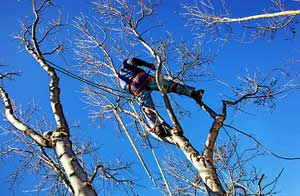
Removing lesser living branches towards the outer part of the tree's crown, yet not changing the shape or size of that tree, has the name crown thinning. This is done to create a consistent density of foliage, which itself achieves specific goals such as: to reduce the total weight of the crown, to reduce the tree's wind resistance, to stop the tree uprooting when it's windy, to enable more sunlight to pass through or to lessen the stress put on particular branches resulting from gravity, wind, ice, or snow. Crown thinning shouldn't change the overall size and shape of the tree, but ought to establish a uniform thickness of foliage around evenly distributed limbs. It should be possible to get crown thinning specialists in Linford, South Benfleet, West Tilbury, Langdon Hills, Vange, Orsett, South Ockendon, Mucking, Basildon, North Stifford, Horndon on the Hill, Grays, Corringham, Canvey Island, and in Stanford-le-Hope.
Preventing Storm Damage
Of all the living things in our gardens, trees appear to be the strongest, sturdiest and the most able to stand up to the vicissitudes of Mother Nature. Certain species of trees can in actual fact live and continue to grow for many hundreds of years and will do so happily in most circumstances.
Nonetheless, when faced with a certain set of conditions they can be quite susceptible to the elements, and it isn't only falling branches or limbs that can result, but the entire tree can topple over in extreme weather. High winds and gales are a major issue for trees, and this form of damage has become more common in Stanford-le-Hope, as the number of severe storms and weather events escalates with climate change. Another problem can be heavy winter snow, and waterlogged soil during flooding or prolonged periods of rain.
To reduce the likelihood of problems with your trees in times of severe weather, it's recommended that you get a certified Stanford-le-Hope tree surgeon to check them out every so often, and prune any dead, dying or overhanging branches.
It is also important to fit larger trees with copper conductors, lightning rods, or other lightning protection systems, to prevent them being struck by lightning, and to safeguard surrounding property and buildings which might be susceptible to "jumps" or side-flashes. A lightning strike can easily kill a tree, or severely weaken it, rendering it more susceptible to pest attacks or disease. Whilst you may not imagine that lightning is all that common in Stanford-le-Hope, each year around 300,000 lightning strikes occur throughout Great Britain.
Ask your local Stanford-le-Hope tree surgery firm what can be done to protect your trees from storm damage and minimise the risk of serious consequences should an unsound tree fall down as a result of extreme weather conditions. (Tags: Storm Damage Prevention Stanford-le-Hope, Storm Damaged Trees Stanford-le-Hope, Storm Damage Stanford-le-Hope).
Woodland Clearance Stanford-le-Hope
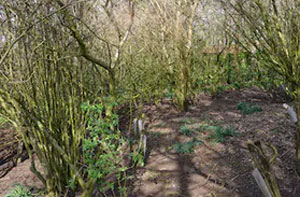
Carrying out woodland clearance in the Stanford-le-Hope area can have national and local restrictions in force, subject to where your ground is, and what flora and fauna is present in the space that is going to be cleared. Calling on the skills of a professional Stanford-le-Hope tree surgeon for your woodland clearance project, will see them follow applicable protection orders and covenants, apply for any required permits, and use eco-friendly and ethical methods in conduction the clearance.
A tree surgeon will verify if there are any felling restrictions, ecological constraints or special planning permissions by conducting a full habitat survey and liaising with the local council. Mitigation procedures may have to be used if there is protected animal species or vegetation in the area; this could require replanting of trees and relocation of creatures, such as lizards or bats to an alternative protected site.
The specialist felling, chipping and mulching equipment that's employed in woodland clearance means that it is far more cost effective to call on a professional tree surgeon to accomplish the project. (Tags: Woodland Preservation Stanford-le-Hope, Woodland Clearances Stanford-le-Hope, Woodland Clearance Stanford-le-Hope, Woodland Management Stanford-le-Hope).
Dead-Wooding Stanford-le-Hope
All professional Stanford-le-Hope tree surgeons will undertake the procedure of dead-wooding (or deadwooding), which is a necessary part of tree management. Dead-wooding calls for the careful removal of dead and rotting branches which may pose a danger to homes, passers-by or vehicles. The most commonplace reasons for tree branches dying off are attack by pests, diseases, light deficiency or root damage, and this is of course a totally natural process.
The rationale for removing dead branches is most often one of safety, nonetheless, it is also sometimes done to benefit the tree of just to make the tree look more attractive. A tree that has an excess of dead, dying and damaged branches is prone to the spread of disease and insect infestations, therefore you can dramatically improve a tree's health by eliminating these unwanted branches. You can also make a tree look more attractive through this process, because a tree with a lot of dead wood can also look rather unsightly.
Usually only substantial dead branches will be cut out, because smaller ones present minimal risk. Nevertheless, any dead limbs that are in excess of fifty millimetres in diameter might have to be removed in locations where a tree overhangs a dwelling, a garden, a park, a public space or a highway in Stanford-le-Hope. (Tags: Deadwooding Services Stanford-le-Hope, Deadwooding Stanford-le-Hope, Deadwooding Trees Stanford-le-Hope, Dead-Wooding Stanford-le-Hope).
Tree Transplanting Stanford-le-Hope
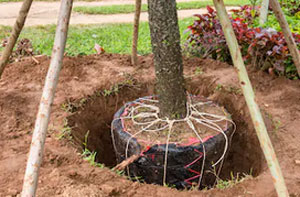
Moving trees and transplanting them to other areas has become a relatively simple process with the introduction of truck mounted tree spades and other nifty tree removal devices. Removing a tree from your property does not have to involve chopping it down and digging out the roots; a specialist tree removal contractor in Stanford-le-Hope can remove and re-plant even mature trees and repair the ground afterwards.
Moving a tree in Stanford-le-Hope causes less stress to the root system and health of the tree in the autumn and winter, but it can still be done during the warmer months by soaking the soil thoroughly before removal. A huge mechanical tree spade digs down into the ground, and manoeuvred to surround the main root-ball and then plucks the unharmed tree from the earth. If the uplifted tree is not to be straight away replanted, it can be temporarily stored provided that its root ball and surrounding soil is kept moist.
Even protected trees can be moved and transplanted by an experienced tree moving service in Stanford-le-Hope, as long as all relevant preservation orders and authorisations are given by the authorities and woodland organisations. It should be possible to obtain transplanting specialists in Linford, South Benfleet, West Tilbury, Langdon Hills, Vange, Orsett, South Ockendon, Mucking, Basildon, North Stifford, Horndon on the Hill, Grays, Corringham, Canvey Island, and in Stanford-le-Hope.
A Tree Surgeons's Daily Duties
- Deal with customers and complete administrative tasks.
- Maintain and service equipment like wood chippers and chainsaws.
- Fell and remove trees and grind stumps.
- Prepare on-site or telephone quotes with the customers.
- Plant trees and vegetation.
- Chip and cut logs and branches.
- Climb trees to prune or remove branches.
- Be competent using power tools and other powered equipment.
- Tidy work area upon completion and remove waste from client's site.
- Produce tree survey reports for commercial and domestic clients.
- Establish dangers presented by trees.
- Evaluate tree health and treatment.
Coming Soon: Tree pruning Stanford-le-Hope.
Tree Surgery Tasks Stanford-le-Hope

Stanford-le-Hope tree surgeons can generally help with woodland management, woodland clearances, shrub maintenance Stanford-le-Hope, tree reduction, hedge lowering, hedge trimming, tree cut sealing, decompaction in Stanford-le-Hope, dead wooding in Stanford-le-Hope, landscaping, forestry management, crown cleaning in Stanford-le-Hope, repair of storm damaged trees, tree felling, tree staking, crown thinning, tree bracing, fruit tree pruning, domestic tree care, root flare exposure Stanford-le-Hope, landscape clearance, coppicing, dead-wooding, hazard assessments, commercial tree surgery, tree planting Stanford-le-Hope, root pruning, damaged tree removal, tree fertilising in Stanford-le-Hope, emergency tree removal, damage restoration Stanford-le-Hope, stump treatment, tree management, tree waste removal, waste removal and other tree surgeon services in Stanford-le-Hope, Essex. These are just some of the duties that are undertaken by a tree surgeon. Stanford-le-Hope professionals will be happy to inform you of their full range of services.
Leave a Review for a Job Well Done
Stanford-le-Hope businesses have always relied on positive feedback to gain new customers and build their presence locally, however right now it's even more important, and having good online reviews is a vital part of this process. If somebody you have used has done a decent job, tell others about how they did, by leaving them a five star review and sharing your experience with the world. Both prospective customers and the business itself can be helped by you disclosing your first hand experience in this manner. When you were initially looking to find somebody to do your tree surgery, you might think about how your decision was ultimately swayed by positive reviews. Without those reviews, you might have looked somewhere else, even if a certain company website appeared to be extremely professional and convincing.

But, how much reliance can be placed on reviews which are shown on the website of a business? Are they provided by real customers or by an employee of the company hoping to push their services?
A simple way to look for genuine and honest reviews is to check out the Google My Business reviews. For determining a business's reputation, this is THE go-to review website that is trusted all over the world, and the search engine ranking positions of a business website can also be impacted by the results. Bing Places for Business is another review website that you could try when leaving reviews for local companies in Stanford-le-Hope, and is the key competitor of Google My Business, holding 2nd place in the reviews sector. A positive review here can assist in raising the local profile of the company that successfully worked on your tree surgery project and establish an overview of their standards and reliability. Other great spots to post testimonials for your business include Facebook and Twitter pages. A major part of any small company's advertising will include the use of these social media sites. Your reviews will help reinforce their sales message, and if you have given recommendations to friends and relatives who are trying to find services of a similar nature, this will give them a kick off point for their hunt for the right tree surgeon.
Even in these modern, high-tech times, it is still appropriate to send in a hand-drafted letter of thanks, if you aren't comfortable with computers. Letters like this are still handy, even in an online world, and can be photographed in for use on websites. Regardless of how you create a review it's a great feeling to think that you may have helped a small local business get a better foothold in the highly competitive market.
Tree Surgeons Near Stanford-le-Hope: Also find: Horndon on the Hill tree surgeons, Orsett tree surgeons, Basildon tree surgeons, Grays tree surgeons, Corringham tree surgeons, Mucking tree surgeons, West Tilbury tree surgeons, Linford tree surgeons, Vange tree surgeons, South Benfleet tree surgeons, South Ockendon tree surgeons, Langdon Hills tree surgeons, North Stifford tree surgeons, Canvey Island here. The majority of these areas are served by a local tree surgeon. Stanford-le-Hope homeowners can get tree surgery estimates by going here.
Tree Care Services Stanford-le-Hope
- Stanford-le-Hope Tree Pollarding
- Stanford-le-Hope Site Clearance
- Stanford-le-Hope Tree Maintenance
- Stanford-le-Hope Woodchipping
- Stanford-le-Hope Woodland Clearances
- Stanford-le-Hope Crown Raising
- Stanford-le-Hope Tree Removal
- Stanford-le-Hope Tree Bracing
- Stanford-le-Hope Cable Bracing
- Stanford-le-Hope Woodland Management
- Stanford-le-Hope Root Decompaction
- Stanford-le-Hope Stump Removal
- Stanford-le-Hope Crown Removal
- Stanford-le-Hope Tree Surveys
More Stanford-le-Hope Trades: Of course, whenever you happen to be having tree care done in Stanford-le-Hope, Essex, you will likely need other garden related services, and apart from a tree surgeon in Stanford-le-Hope, Essex, you might additionally need soil irrigation in Stanford-le-Hope, decking installers in Stanford-le-Hope, garden designers in Stanford-le-Hope, artifical grass in Stanford-le-Hope, fence builders in Stanford-le-Hope, rubbish removal in Stanford-le-Hope, garden sheds in Stanford-le-Hope, weeding in Stanford-le-Hope, hedge trimming in Stanford-le-Hope, pond maintenance in Stanford-le-Hope, driveway pavers in Stanford-le-Hope, landscaping in Stanford-le-Hope, lawn mowing services in Stanford-le-Hope, patio cleaning in Stanford-le-Hope, garden clearance in Stanford-le-Hope, local SKIP HIRE in Stanford-le-Hope, and other different Stanford-le-Hope tradespeople.
Tree Surgeons Around Stanford-le-Hope: Tree surgeons were recently doing work in the following Stanford-le-Hope locations: Dowland Close, Bracelet Close, Dunstable Road, St Johns Way, Armstrong Close, Chestnut Walk, Second Avenue, Sandringham Close, Turold Road, The Square, Arundel Drive, Third Avenue, Clarence Road, Chase Road, Colville Close, Bibby Close, Colman Close, St James Avenue East, Berwood Road, Adams Road, Coombe Rise, Caldwell Road, Tripat Close, Beechcombe, The Glen, Birchwood Road, Sanctuary Gardens, and in homes and businesses with these postcodes: SS17 0NW, SS17 0LB, SS17 0BE, SS17 0FN, SS17 0BD, SS17 0PB, SS17 0JX, SS17 0HR, SS17 0BP, SS17 0LJ. These places recently saw activity by a qualified tree surgeon. Stanford-le-Hope householders enjoyed the benefits of reliable and high quality tree surgery services on each occasion.
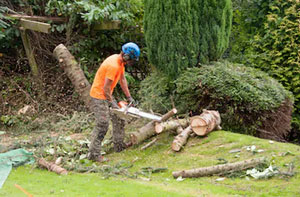 Tree Surgeon Stanford-le-Hope
Tree Surgeon Stanford-le-Hope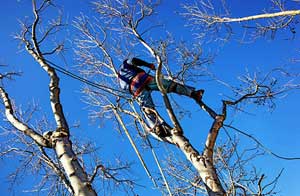 Tree Care Stanford-le-Hope
Tree Care Stanford-le-Hope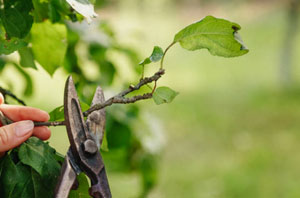 Tree Surgery Stanford-le-Hope
Tree Surgery Stanford-le-HopeMore Essex Tree Surgeons: Essex tree surgeons: Great Wakering, Barking, Romford, Hawkwell, Burnham-on-Crouch, Harwich, Basildon, West Thurrock, Galleywood, Witham, Manningtree, Hockley, Parkeston, Ingatestone, Southminster, Shoeburyness, Wickford, Buckhurst Hill, Pitsea, Maldon, Stanford-le-Hope, Brentwood, Heybridge, Danbury, Rayleigh, Rochford, Loughton, Hadleigh, Laindon, South Benfleet, Tiptree, Stansted Mountfitchet, Wivenhoe, Epping, Chingford, Waltham Abbey, Saffron Walden, Southend-on-Sea, Frinton-on-Sea, Holland-on-Sea, Billericay, Hullbridge, Chelmsford, West Mersea, Walton-on-the-Naze, Purfleet, Halstead, Grays, South Woodham Ferrers, Chafford Hundred, Rainham, Langdon Hills, Westcliff-on-Sea, Chipping Ongar, Corringham, Chigwell, Brightlingsea, Great Dunmow, Writtle, Coggeshall, Leigh-on-Sea, Braintree, Clacton-on-Sea, Canvey Island, Stanway, Tilbury, South Ockendon, Hornchurch, Dagenham, Great Baddow, Upminster, Harlow, Colchester, North Weald Bassett, Ilford and Southchurch.
If you're interested in local Stanford-le-Hope info click here
Tree Surgery SS17 area, and dialling code 01375.
TOP - Tree Surgeon Stanford-le-Hope -
More Trades: Gate Fitters - Gutter Cleaning - Tilers - Carpet Fitters - Carpenters
Tree Surgery Stanford-le-Hope - Tree Management Stanford-le-Hope - Arboriculturalist Stanford-le-Hope - Tree Surgeons Stanford-le-Hope - Tree Surgeon Near Me - Stump Grinding Stanford-le-Hope - Tree Removal Stanford-le-Hope - Tree Pruning Stanford-le-Hope - Tree Surgeon Stanford-le-Hope




